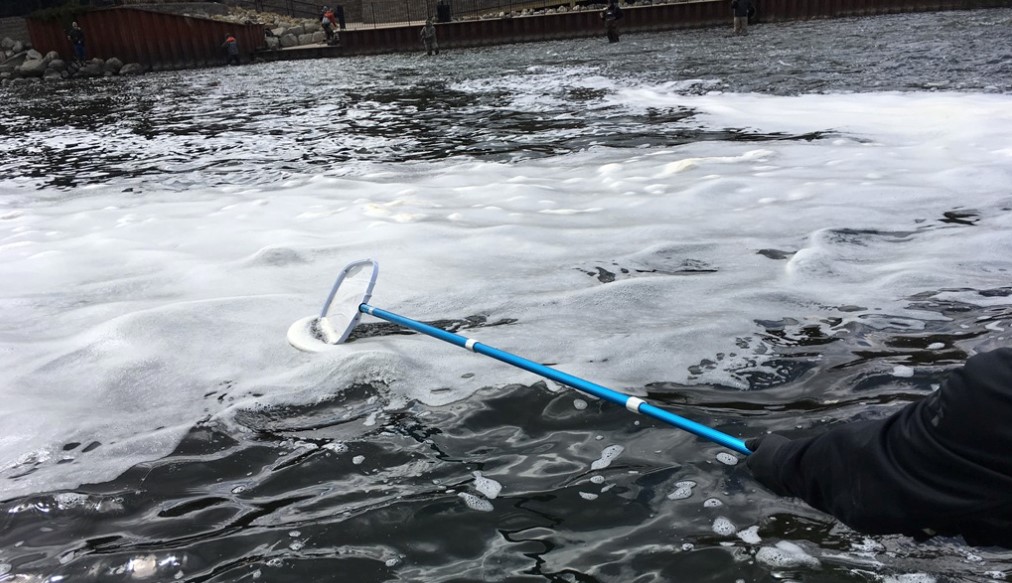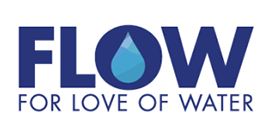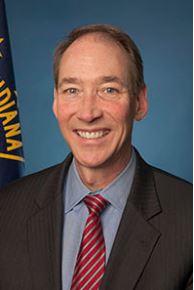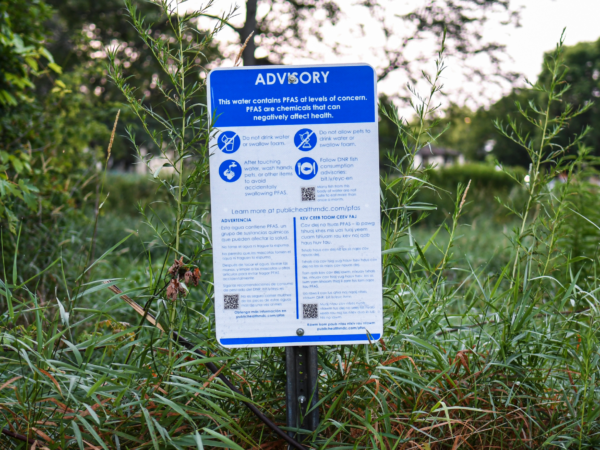
An April 6, 2018 photo of Michigan DEQ contractor AECOM sampling for PFAS foam in the Rogue River below the Rockford Dam. The dam is downstream of the former Wolverine World Wide tannery. On June 5, 2018, the Michigan DEQ announced that foam samples taken at the Rockford Dam tested positive for extremely high levels of PFAS, which Wolverine used to Scotchgard shoes at the tannery. (KCHD/MDEQ)
As states in the Great Lakes region come to grips with how to deal with the emerging family of contaminants known as PFAS, one thing is clear: there is a desire for a faster response from the U.S. Environmental Protection Agency.

Scott Dean, spokesperson for the Michigan Department of Environmental Quality
“While we continue to support federal action on PFAS, we are concerned that the timeline for federal action on PFAS standards and regulations is not more aggressive,” Michigan Department of Environmental Quality spokesperson Scott Dean told Great Lakes Now.
Michigan, Dean said, looks forward to receiving “more clarity” from the EPA on its timetable for dealing with PFAS.
PFAS (per and polyfluoroalkyl) substances are a group of man-made chemicals that includes PFOA, PFOS, GenX, and many other chemicals, according to the EPA.
These chemicals are found in common items like water-repellent fabrics and non-stick products like Teflon pans. They are referred to as the “forever chemicals” because they don’t breakdown over time and exposure to them “can lead to adverse human health effects” according to the EPA.
In Indiana, Bruno Pigott, the commissioner of the state’s Department of Environmental Management, said the agency works well with the EPA on the PFAS issue and understands it’s a priority for the agency.
But Pigott said Indiana’s biggest need is for an acceptable standard for PFAS levels, and he wants it sooner rather than later, understanding it will take some time.
Wisconsin has “historically relied on EPA to be the lead agency,” said DNR spokesperson Andrew Savagian. He said environmental and health issues don’t stop at state boundaries, and EPA’s involvement helps provide national consistency and protection.
Wisconsin is working on the PFAS issue with partners including the EPA, local, state and federal health officials and the responsible parties, according to Savagian.
Minnesota agreed with Michigan, Indiana and Wisconsin on the EPA’s involvement on PFAS.
“It’s great that EPA put together their PFAS Action Plan,” said Pollution Control Agency spokesperson Walker Smith. He said it brings attention to a national issue.
“But that plan was kind of a long time in the making,” Smith told Great Lakes Now.
Environmental groups are not as patient as state agencies.
“EPA is falling down on the job,” said Dave Dempsey a senior adviser to the Traverse City, Mich.-based For the Love of Water,  known as FLOW.
known as FLOW.
Dempsey has been monitoring water quality issues in Michigan for 35 years including as an adviser to former Gov. Jim Blanchard. He says PFAS is a national problem and he wants the EPA to be an “advocate…. not a referee between communities and the manufacturers.”
“Because the feds will not act decisively, Michigan needs to set an enforceable drinking water standard,” Dempsey said.
The Environmental Working Group works nationally on PFAS and took a broader swipe at the EPA.
“Over the past two decades it has become clear that the federal government is unable to incorporate modern science into its existing regulations and is unable to set any new drinking water regulations,” senior scientist David Andrews told Great Lakes Now.
Andrews wants the EPA to “set a legally enforceable limit for PFAS in drinking water that is protective for infants, children and everyone from harm caused by PFAS chemicals.”
Absent that standard, “the EPA should provide technical assistance and scientific support to states moving forward with legal limits,” Andrews said.
EPA: Guidance, support and process
Great Lakes Now asked the EPA to clarify its role with the states on dealing with PFAS. Specifically, would it lead and provide direction to the states? Or could it provide guidance and assistance?
The “EPA is developing guidance” based on its current scientific understanding of PFAS toxicity,” spokesperson Andrea Drinkard said.
 Drinkard said groundwater cleanup recommendations are currently under interagency review and “may also be useful for state, tribal or other regulatory authorities.”
Drinkard said groundwater cleanup recommendations are currently under interagency review and “may also be useful for state, tribal or other regulatory authorities.”
The EPA did not directly respond to Great Lakes Now on the states’ desire for a more aggressive timeline on setting a standard for acceptable amounts of PFAS.
“The EPA is committed to following the MCL (maximum contaminant level) rulemaking process as established by the Safe Drinking Water Act,” Drinkard said without commenting on how long that may take.
President Trump’s recently proposed 2020 budget calls for a 31 percent funding cut for the EPA and projects a staff reduction from 14,000 to 12,500. The budget narrative says the agency will continue to empower the states as the primary implementers of environmental protection.
“Groundhog Day”
“The emergence of PFAS is like Groundhog Day,” water policy adviser Dempsey.said in a recent podcast focused on groundwater quality.
Going back decades Dempsey said he remembers chemicals like PBB’s, dioxins and TCE as issues at various times. He says we find a problem, fix it and then allow it to be replaced it with something that may be worse then begin the process again.
The remedy Dempsey says, is “to have a national approach to prevent bad chemicals from getting into the stream of commerce in the first place.”
To see more headlines about PFAS issues in other states and countries, visit Great Lakes Now’s map by clicking HERE.






